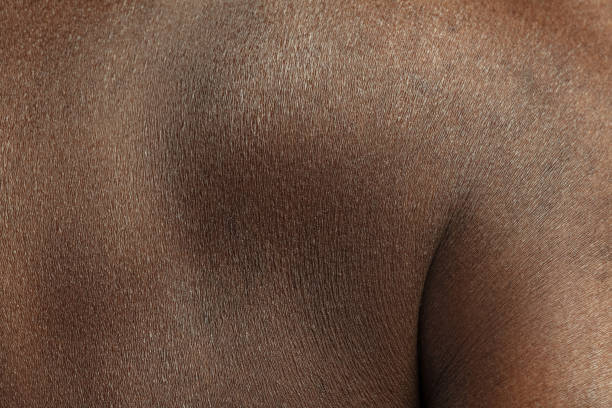Dry skin can feel tight, flaky, and painful, but identifying the underlying cause is the first step toward alleviating it. Let’s look at what causes dry skin and how to restore long-lasting hydration.
What Is Dry Skin?
Dry skin, also known as xerosis, is a common ailment characterized by a lack of moisture in the skin’s outer layers. If not properly handled, it can feel rough, appear dull, and cause irritation.
Everyone’s experience with dry skin differs. For some, it is seasonal, appearing in winter or in dry areas. Others consider it a chronic skin type caused by heredity or underlying disorders such as eczema or psoriasis.
Dry skin, regardless of the reason, is typically characterized by a weakened skin barrier that loses moisture quicker than it can repair itself.
Common Symptoms of Dry Skin
Dry skin is more than just feeling dry; it can impair your skin’s appearance, feel, and health.Knowing the symptoms aids in determining severity and selecting the appropriate treatment.
Itching, redness, peeling, stiffness, and, on occasion, fissures or bleeding are common symptoms. The skin can appear scaly or ashy, particularly on the legs and arms. In more severe situations, dry regions may become irritated or infected. If moisturizers and lifestyle changes do not work, it may indicate a more serious skin condition that requires professional attention.
What Causes Dry Skin?
Several variables, including weather and skincare blunders, can dehydrate your skin. Here are some of the ways your environment, behaviors, and body might cause you to dry out.
Cold air and low humidity levels are important culprits, particularly during the winter, when indoor heating exacerbates the situation. Long, hot showers, harsh soaps, and over-cleansing can all strip your skin’s natural oils.
Another risk is aging; as you get older, your skin generates less oil, increasing your chances of developing dry skin. Medical problems like hypothyroidism, diabetes, and atopic dermatitis can all impede your skin’s ability to stay hydrated.
How to Treat Dry Skin Naturally
Natural therapies can be both mild and efficient in treating dry, irritated skin. The idea is to retain moisture while mending the skin’s barrier.
Use moderate, non-foaming cleansers to protect your skin’s natural oils. Coconut oil, shea butter, and jojoba oil provide deep hydration without blocking pores.
Aloe vera gel helps relieve irritation and promote healing, and oatmeal baths can alleviate itching and reduce inflammation. Applying these cures shortly after showering, while your skin is still damp, helps to retain moisture.
Best Skincare Ingredients for Dry Skin
Choosing the appropriate products can improve your dry skin care routine. Look for humectants, emollients, and occlusives to provide multilayered hydration.
Humectants such as hyaluronic acid and glycerin bring moisture to the skin. Emollients like ceramides and squalane help to smooth and soften the skin by filling up the spaces between the cells.
Occlusives such as petrolatum or beeswax create a protective seal that prevents water loss. Products containing urea or lactic acid gently exfoliate dead cells while moisturizing, increasing texture and moisture retention.
Lifestyle Changes That Help Combat Dry Skin
Dry skin is caused by more than simply what you wear; it is also a result of how you live. These simple habits can help you manage dryness effectively.
Drink plenty of water to keep your skin hydrated from within. Use a humidifier to keep indoor moisture levels stable, especially during colder months.
Avoid taking long, hot showers and instead of rubbing your skin, pat it dry. Switch to cotton clothing to avoid friction and irritation, and apply moisturizer within three minutes of exiting the shower for optimal absorption.
Best Over-the-Counter Products for Dry Skin
When natural therapies are insufficient, over-the-counter medications might provide focused relief. The most effective solutions contain hydration, barrier restoration, and itch control.
Look for dermatologist-recommended moisturizers such as CeraVe Moisturizing Cream, which contains ceramides and hyaluronic acid, or Eucerin Advanced Repair Lotion, which includes urea.
Aquaphor Healing Ointment is an excellent solution for badly cracked skin. Vanicream Moisturizing Cream, which is devoid of dyes and fragrances, is ideal for treating face dryness in sensitive skin.
When to See a Doctor
Persistent or worsening dry skin may be a sign of something more serious. Here’s when it’s time to consult a dermatologist.
- If dryness is accompanied by severe redness, swelling, or pain
- If your skin develops thick, scaly patches that don’t respond to moisturizers
- If you have open sores or signs of infection (oozing, crusting)
- If you suspect a skin condition like eczema, psoriasis, or ichthyosis
- If symptoms affect your quality of life or sleep
Preventing Dry Skin Long-Term
Consistency is essential for preventing dry skin.Small everyday steps can help keep your skin supple, resilient, and healthy.
Maintain a daily skincare routine that includes gentle cleaning and thorough moisturizing. Reapply moisturizer throughout the day if your environment is very dry.
Gloves and scarves can help protect your skin from harsh weather, and sunscreen should always be used, especially on gloomy days. Regular exfoliation (once a week) can also help prevent buildup that prevents moisturizers from penetrating correctly.
Final Thoughts
Dry skin may be common, but it doesn’t have to be your norm. By identifying the triggers and adopting a gentle, consistent routine, you can restore your skin’s natural glow and comfort. From natural oils to scientifically backed moisturizers, there are plenty of tools to help your skin heal and thrive.
If your dryness persists or worsens, don’t hesitate to seek medical advice. Healthy skin isn’t just about appearance it’s about comfort, confidence, and well-being.


